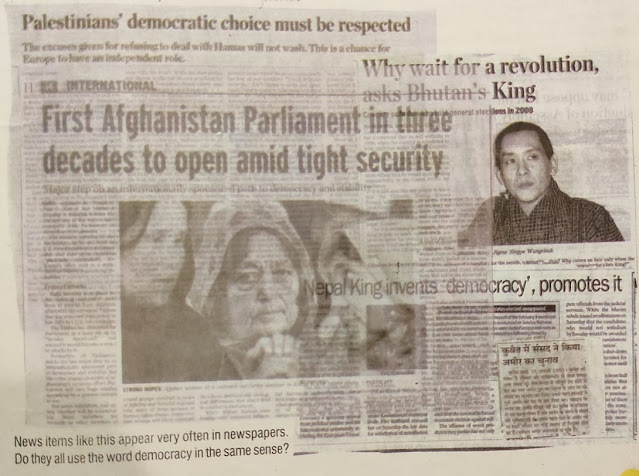5.Chapter 7.S.St.Changing Trends in Occupation
Class 5.Subject - S.St.
Chapter- 7.Changing Trends in
Occupation
Answers:
A.Tick the correct option
1.The opportunities of employment in
rural areas have
Ans. (b) Decreased
2. Scarcity Of milk developed
due to
Ans. (a) Low production of milk
3. The White Revolution is
related to
Ans. (c) Dairy farming
4. an important aspects of
changing trends in occupation is
Ans. (a) Participation of women
B.Fill in the blanks:
1. The use of machines in
agriculture brought a great change in occupations.
2. Dr. Kurien created a
National Milk Grid that linked all milk producers with consumers.
3. Many women suffer
due to unequal treatment known as Gender Discrimination.
4. White Revolution involved many professionals
and non- professionals.
5. A tailor required
skill to stitch garments
C.State whether True or
False
1. A blacksmith supplies tools
to the farmer. True
2. Many farmers gave up
farming due to low returns.
True
3. Low quality feed given to
milk giving animals created scarcity of milk .True
4. Tube well diggers are in
great demand in villages.
True
5. A rickshaw puller is
a professional.
False
D.Answer briefly:
Q 1. Mention two non
agricultural occupations in rural areas.
Ans. Two non- agricultural
occupations in rural areas are
(i) Dairy farmer
(ii) Truck driver.
Q 2. Name two occupations that
are common in urban areas.
Ans. Two occupations that are common
in urban areas are
(i) Doctor
(ii) Teacher
Q 3. Give one reason for low
production of milk.
Ans. The quality
of animals and their feed were not very good.
Q 4. Name four milk products
that you like.
Ans. Four Milk products that I like
Ice cream, curd, lassi, sweets.
Q 5. Do you consider any work
inferior ? Give one reason.
Ans. No, No
work is superior or inferior. Work is work. It is absolutely wrong to consider
any work as a good or bad. We must
respect all of them.
E.Answer the following questions:
Q 1. How has mechanisation
brought change in the agriculture sector ?
Ans. The use of
machines in the agricultural sector brought a great change in
occupation. A single machine
replaced the labour of many workers. Many farm
labourers lost their source of
income. But machines and electricity also created some new
occupations.
Q 2. Define white revolution.
How did it bring changes in dairy farming ?
Ans. Dr.
Verghese Kurien was the father of White Revolution in dairy farming at Anand
in Gujarat. White Revolution
was related to the production of milk, processing,
marketing ,export and distribution
of byproducts of milk. It brought changes in the
seasonal and regional price
variations and became the largest producer of milk in
the world .
Q 3. Explain changing trends
in occupation in the present times with examples.
Ans. Changing
trends in occupation in the present time is entirely different. Many new
occupations have become popular.
They are related to industries , transport
education, communication, fashion
etc. They also need the services of professional and non -
professional.
Q 4. What is Dignity of Labour
? Give an example.
Ans. Dignity of
labour means all types of works are important either what is manual
and intellectual labour. No
work should be considered good or bad . The work
itself is a dignity. For
example - Mahatma Gandhi is the father of the nation but he
used to do all types of work,
even cleaning the toilet and surroundings.
Q 5. Define Gender
Discrimination. In what ways do the women suffer due to gender
discrimination ?
Ans. Many women
suffer due to an equal treatment, which hamper the industrial
thought is known as the Gender
Discrimination. Women are not given equal
opportunities in education, jobs and
political system. They take over all responsibilities but they are not
given the same

Comments
Post a Comment